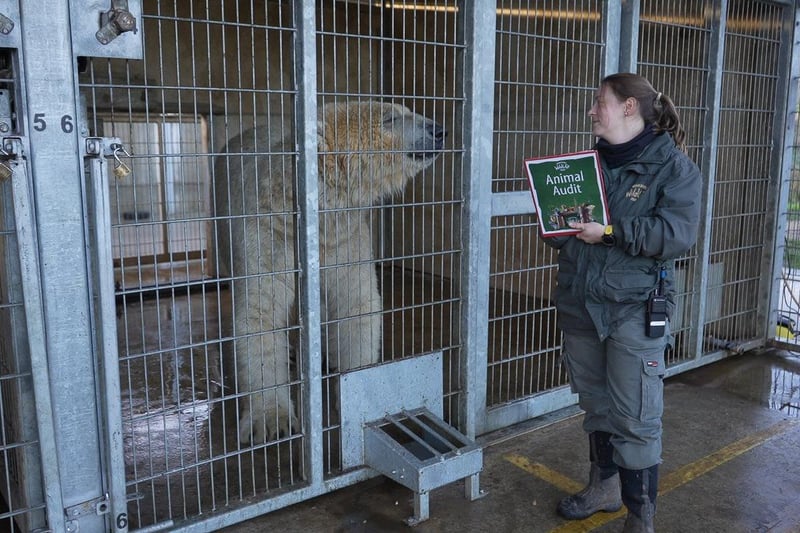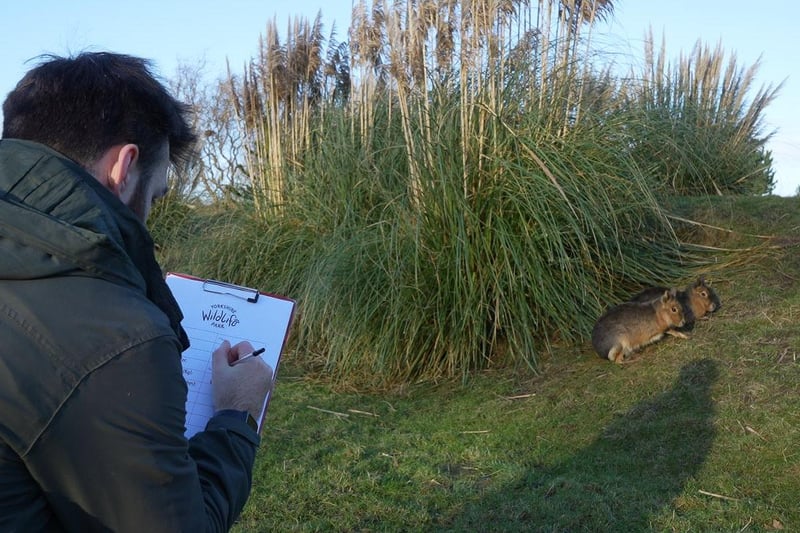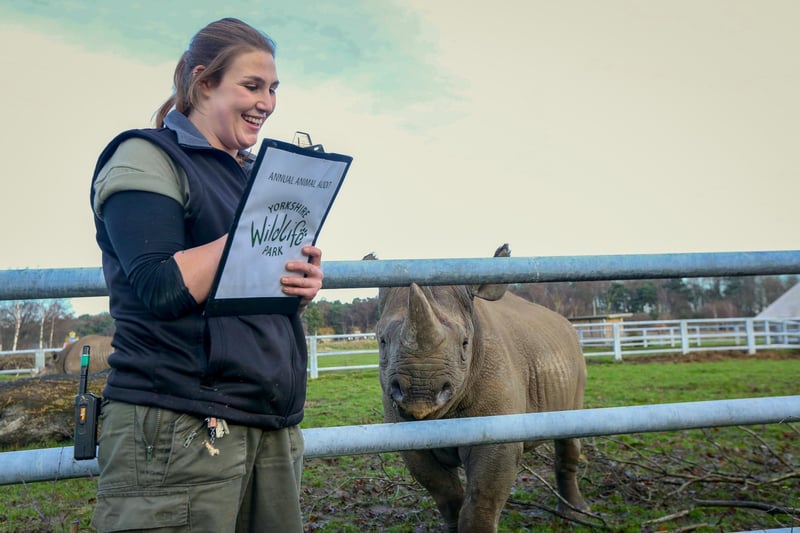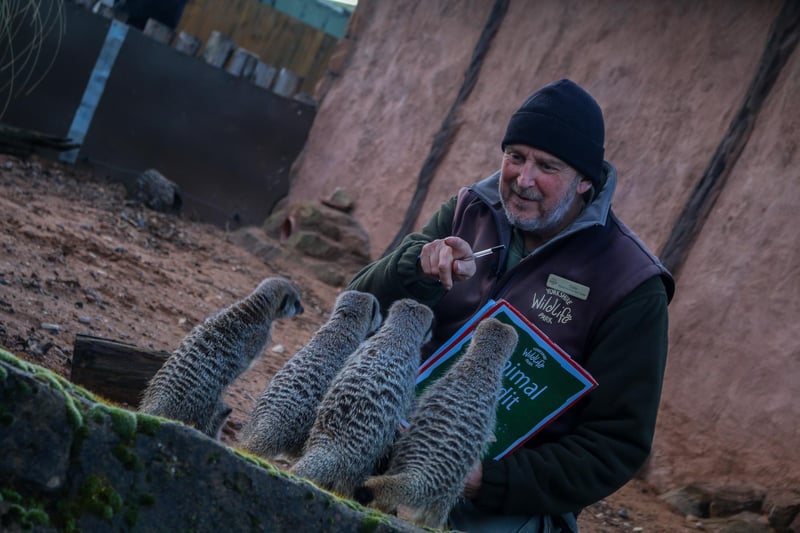Yorkshire Wildlife Park’s annual animal audit is underway meaning every creature has their vital statistics recorded as part of a national monitoring and conservation programme.
Each of the hundreds of animals, from tiny meerkats to Eastern Black Rhinos and Giraffes, has to be counted, measured and weighed.
Coaxing them onto scales and to stay still long enough to get the tape measure in place took a weekend of innovation and hard work as the animals range from tiny primates weighing ounces to polar bears at 600kgs and the park’s three Eastern Black Rhinos that weigh in at 1,350kgs.
“We have to make each animal comfortable and encourage them to stay still, which is tricky with the cheeky meerkats and Tamarin monkeys, and also find the appropriate equipment,” said Colin Northcott, Deputy Head of Carnivores at the Auckley park, near Doncaster.
“But we are very lucky to have a team that is patient, experienced and always think of solutions quickly when faced with a problem.”
The 175-acre park is home to more than 70 rare and endangered species featuring the world’s smallest Antelope, the Kirk’s Dik-dik, and the rare Amur Leopard.
UK zoos collect detailed statistics on their animals which feed into a national database and a global bank of information of more than 10 million animals from 22,000 species.
The data is used to share knowledge and conservation successes such as the park’s successful breeding of an Amur Leopard cub this year.
Yorkshire Wildlife Park, which opened in 2009, works closely with The Wildlife Foundation, an animal welfare charity based at the park which is a partner and funder of conservation programmes around the world.

1. Polar bear get's weighed up
Polar bears can weigh up to 600kgs and need to made comfortable for rangers to weigh them. Photo: Yorkshire Wildlife Park

2. All animals must be counted
Each of the hundreds of animals, from tiny meerkats to Eastern Black Rhinos and Giraffes, has to be counted and have their vital statistics recorded as part of a national monitoring and conservation programme. Photo: Yorkshire Wildlife Park

3. Eastern Black Rhino
The park’s three Eastern Black Rhinos that weight in at 1,350kgs. Photo: Yorkshire Wildlife Park

4. Meerkats lined up
Colin Northcott, Deputy Head of Carnivores said: "We have to make each animal comfortable and encourage them to stay still, which is tricky with the cheeky meerkats." Photo: Yorkshire Wildlife Park
